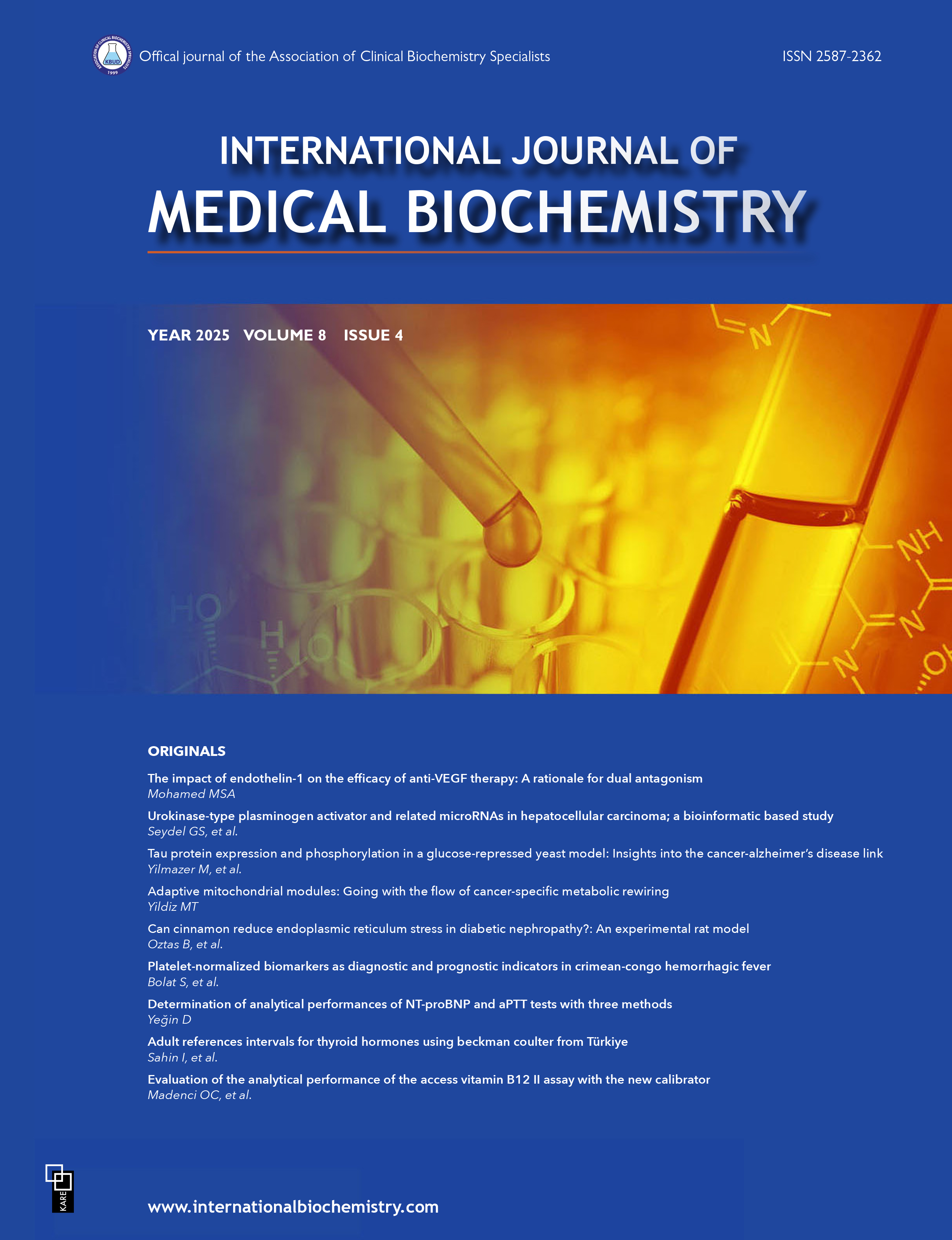Can cinnamon reduce endoplasmic reticulum stress in diabetic nephropathy?: An experimental rat model
Berrin Oztas1, Fatma Ceyla Eraldemir1, Sezgi Akbal2, Esra Acar3, Fatih Hunc1, Melda Yardimoglu Yilmaz21Department of Medical Biochemistry, Kocaeli University Faculty of Medicine, Kocaeli, Türkiye2Department of Histology and Embryology, Kocaeli University Faculty of Medicine, Kocaeli, Türkiye
3Department of Biochemistry, Kocaeli Health and Technology University Faculty of Pharmacy, Kocaeli, Türkiye
INTRODUCTION: The aim was to investigate the efects of cinnamon on the kidney tissue serum endoplasmic reticulum (ER) stress marker, reticulone (RTN)1A, receptor for advanced glycation end products (RAGE) and the lipid peroxidation indicator, malondialdehyde (MDA) in an experimental diabetes mellitus (DM) rat model.
METHODS: Twenty-eight male Wistar Albino rats (six months old and weighing 350400 g) were divided equally into four groups: 1) Control group - citrate buffer (0.2 M, pH 4.4; ip); 2) Cinnamon group - cinnamon (600 mg/kg/day, orogastric tube); 3) DM group -STZ (35 mg/kg, ip); and 4) DM + cinnamon group; Cinnamon and STZ were given at the same doses and route as in Groups 2 and 3, respectively. At the end of the 12-week experiment period, serum, urine and kidney tissue samples were taken from all groups. Serum RTN 1A, RAGE, MDA, urea, blood urea nitrogen (BUN), creatinine levels andkidney tissue RTN 1A, RAGE and MDA levels were measured.
RESULTS: Our biochemical results showed that there was a statistically signifcant decrease in RAGE and MDA levels in the DM + cinnamon group compared to the DM group (p<0.05). In addition, the decrease in serum urea, BUN, and creatinine levels in the DM + cinnamon group was also remarkable (p<0.05). Althought histologically no widespread necrosis was observed, cortical interstitial vascular dilatation was observed in DM+cinnamon group.
DISCUSSION AND CONCLUSION: Cinnamon was efective in reducing markers of oxidative stress and ER stress including RAGE and MDA, in kidney tissue in an animal model of diabetic nephropathy.
Keywords: Cinnamon, diabetic nephropathy, endoplasmic reticulum stress, malondialdehyde, receptor for advanced glycation end products, reticulon 1A
Manuscript Language: English







